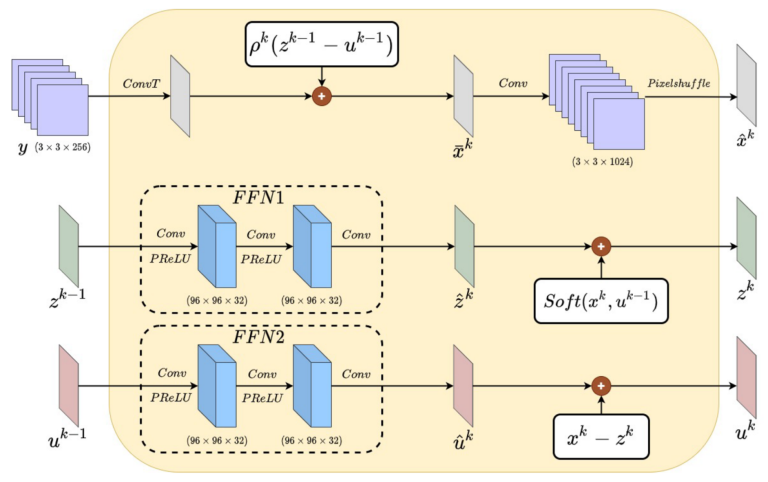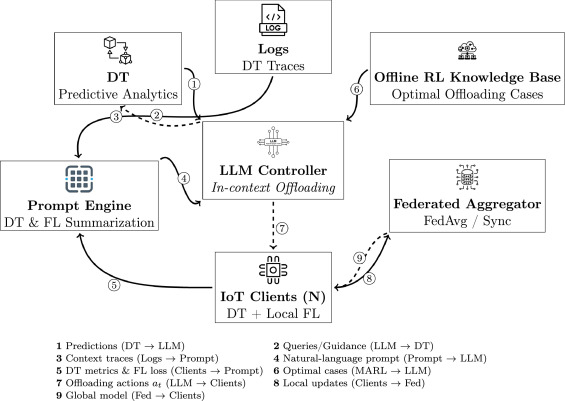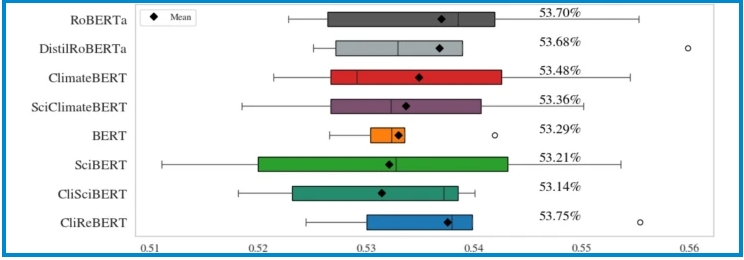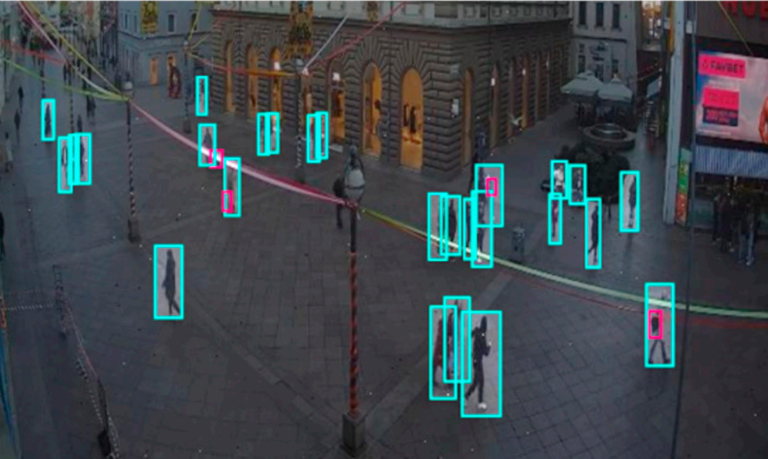Deep learning has demonstrated exceptional learning capabilities, leading to the development various deep unfolding networks for image reconstruction. However, current deep unfolding networks often replace certain steps of traditional optimization algorithms with neural networks, thereby compromising the interpretability of the optimization algorithms. Additionally, each iteration in the unfolding process may result in certain image information […]
Research Papers
XDT-FMARL: An Explainable Federated Multi-Agent Reinforcement Learning Framework for Energy-Efficient IoT Task Offloading
Effectively managing the vast data generated by sensor networks has become crucial with the rapid spread of IoT devices under strict resource constraints. This research introduces a framework that integrates explainable artificial intelligence (XAI), digital twins (DT), federated learning (FL), and multi-agent reinforcement learning (MARL) to optimise energy use and task distribution in distributed IoT […]
Proactive Context Aware Task Offloading in Digital Twin Driven Federated IoT Systems with Large Language Models
This study considers the combination of Digital Twins (DT), Federated Learning (FL), and computation offloading to establish a context-aware framework for effective resource management in IoT networks. Although DT models can predict battery levels, CPU usage, and network delays to aid reinforcement learning (RL) agents, earlier RL-based controllers require significant training and are slow to […]
Pretraining and evaluation of BERT models for climate research
Motivated by the pressing issue of climate change and the growing volume of data, we pretrain three new language models using climate change research papers published in top-tier journals. Adaptation of existing domain-specific models based on Bidirectional Encoder Representations from Transformers (BERT) architecture is utilized for CliSciBERT (domain adaptation of SciBERT) and SciClimateBERT (domain adaptation […]
Digital Twin-Driven Federated Learning and Reinforcement Learning-Based Offloading for Energy-Efficient Distributed Intelligence in IoT Networks
Improved frameworks for delivering both intelligence and effectiveness under strict constraints on resources are required due to the Internet of Things’ (IoT) devices’ rapid expansion and the resulting increase in sensor-generated data. In response, this research considers a joint learning-offloading optimization approach and presents an improved framework for energy-efficient distributed intelligence in sensor networks. Our […]
Forecasting the Trajectory of Personal Watercrafts Using Models Based on Recurrent Neural Networks
Monitoring and predicting personal watercraft trajectories is a novel and largely unexplored research area where any development is valuable for various rental services. Unlike existing work focused on specific maritime routes, this study introduces a location-agnostic deep-learning approach capable of generalizing across diverse environments. This is achieved by using an innovative preprocessing approach including offset […]
A System for Real-Time Detection of Abandoned Luggage
In this paper, we propose a system for the real-time automatic detection of abandoned luggage in an airport recorded by surveillance cameras. To do this, we use an adapted YOLOv11-s model and a proposed algorithm for detecting unattended luggage. The system uses the OpenCV library for the video processing of the recorded footage, a detector, […]
Enhancing Biophysical Muscle Fatigue Model in the Dynamic Context of Soccer
In the field of muscle fatigue models (MFMs), the prior research has demonstrated success in fitting data in specific contexts, but it falls short in addressing the diverse efforts and rapid changes in exertion typical of soccer matches. This study builds upon the existing model, aiming to enhance its applicability and robustness to dynamic demand […]
Pravna tehnologija (Legal Tech) i njezina (ne)prikladnost za zamjenu pravne struke
Regression-Based Machine Learning Approaches for Estimating Discharge from Water Levels in Microtidal Rivers
The challenges of managing water resources in tidal rivers, exacerbated by climate change and anthropogenic impacts, require innovative approaches for accurate estimation of hydrological parameters. In tidal rivers and estuaries, water levels depend primarily on river discharge and tidal dynamics. Microtidal estuaries are particularly complex due to the strong stratification and two-layer structure, which also […]









